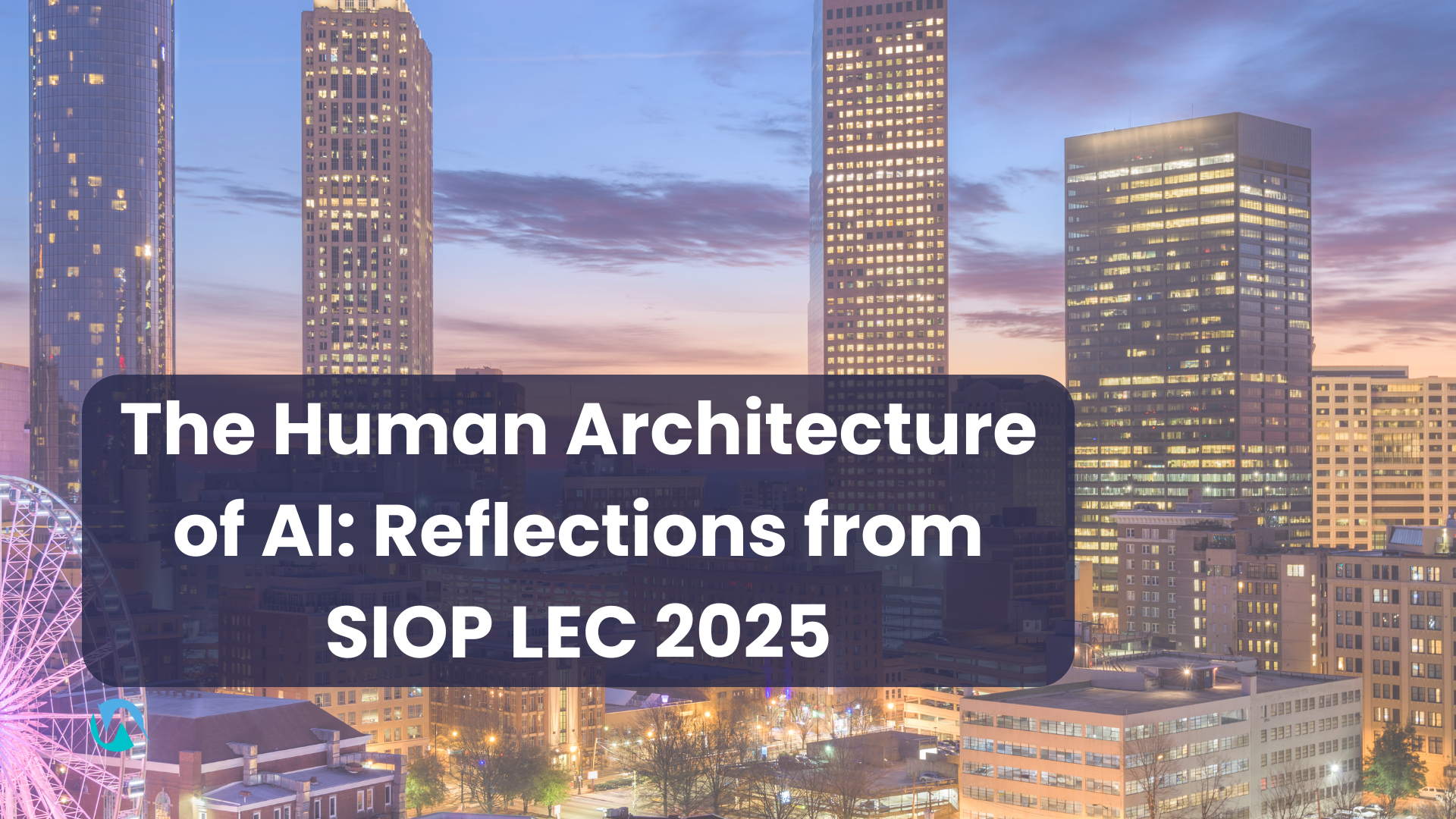Reflections on SIOP LEC 2025

I attended my first SIOP event last week – the Leading Edge Consortium held this year in Atlanta. For some background, this series was designed to open up SIOP to more practitioners and the sessions were designed with a 50/50 split between practitioners and researchers. I wasn’t sure what to expect, but I left with a different perspective on what’s in store, not from the advances in AI technology, but from how deeply human the conversation around AI has become. For years, I’ve thought about workforce planning as a data problem. I still do. But what I took away from this event is that the real challenge isn’t in the math — it’s in the architecture of how people and systems think together.
What struck me most was how every speaker, in their own way, was wrestling with the same paradox: AI is both a breakthrough in capability and a test of judgment. It’s easy to automate; it’s much harder to decide what should be automated. The answer isn’t “AI versus humans.” It’s how to design environments where human expertise is elevated, not eroded, by machine intelligence.
I came away believing that the defining skill for the next decade won’t be prompt engineering or data modeling — it will be trust design. Trust in the data, in the process, and in the people using it. Models can’t carry that weight alone. Leaders have to earn it through clarity, transparency, and calibration — knowing what can safely be 90% right, and what must be 99.999% right. That judgment call sits squarely in the hands of humans.
The other shift for me was seeing how much the boundaries of analytics are expanding. We’re moving past dashboards and reports into systems that learn — organizations that behave more like living organisms, sensing and adjusting in real time. That’s what “operational headcount planning” has always meant to me: workforce data as a flow, not a snapshot. Seeing that language echoed in the research reminded me that we’re on the right path, but also how much further the field can go.
Perhaps the biggest undercurrent running through the conference was cultural. AI doesn’t just expose technical gaps — it reveals philosophical ones. You could feel it in the tension between “me-search” and real research, between storytelling and spin, between engagement and genuine thriving. The companies that will thrive won’t be the ones with perfect algorithms; they’ll be the ones that create environments where curiosity outruns certainty.
That’s the work ahead for HR and I/O psychology. We need to stop waiting for engineers to hand us the playbook. We need to write it — not as technologists, but as translators who understand both the systems and the people inside them.
For me, that’s what SIOP LEC clarified. The future of workforce strategy isn’t about chasing new tools. It’s about redesigning how intelligence — human and artificial — work together. It’s about building systems that are ethical, experimental, and empathetic.
And it’s about remembering that even in the age of algorithms, the hardest part of leadership will always be human.